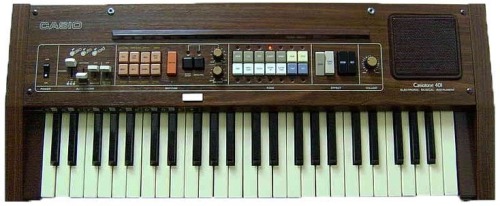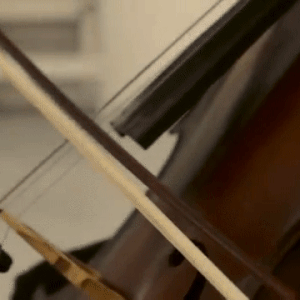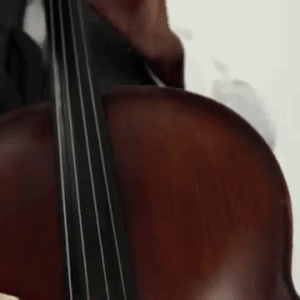— Instrument ! - Blog Posts
Hunting for Organic Molecules on Mars

Did Mars once have life? To help answer that question, an international team of scientists created an incredibly powerful miniature chemistry laboratory, set to ride on the next Mars rover.

The instrument, called the Mars Organic Molecule Analyzer Mass Spectrometer (MOMA-MS), will form a key part of the ExoMars Rover, a joint mission between the European Space Agency (ESA) and Roscosmos. A mass spectrometer is crucial to send to Mars because it reveals the elements that can be found there. A Martian mass spectrometer takes a sample, typically of powdered rock, and distinguishes the different elements in the sample based on their mass.

After 8 years of designing, building, and testing, NASA scientists and engineers from NASA’s Goddard Space Flight Center said goodbye to their tiny chemistry lab and shipped it to Italy in a big pink box. Building a tiny instrument capable of conducting chemical analysis is difficult in any setting, but designing one that has to launch on a huge rocket, fly through the vacuum of space, and then operate on a planet with entirely different pressure and temperature systems? That’s herculean. And once on Mars, MOMA has a very important job to do. NASA Goddard Center Director Chris Scolese said, “This is the first intended life-detecting instrument that we have sent to Mars since Viking.”

The MOMA instrument will be capable of detecting a wide variety of organic molecules. Organic compounds are commonly associated with life, although they can be created by non-biological processes as well. Organic molecules contain carbon and hydrogen, and can include oxygen, nitrogen, and other elements.

To find these molecules on Mars, the MOMA team had to take instruments that would normally occupy a couple of workbenches in a chemistry lab and shrink them down to roughly the size of a toaster oven so they would be practical to install on a rover.

MOMA-MS, the mass spectrometer on the ExoMars rover, will build on the accomplishments from the Sample Analysis at Mars (SAM), an instrument suite on the Curiosity rover that includes a mass spectrometer. SAM collects and analyzes samples from just below the surface of Mars while ExoMars will be the first to explore deep beneath the surface, with a drill capable of taking samples from as deep as two meters (over six feet). This is important because Mars’s thin atmosphere and spotty magnetic field offer little protection from space radiation, which can gradually destroy organic molecules exposed on the surface. However, Martian sediment is an effective shield, and the team expects to find greater abundances of organic molecules in samples from beneath the surface.

On completion of the instrument, MOMA Project Scientist Will Brinckerhoff praised his colleagues, telling them, “You have had the right balance of skepticism, optimism, and ambition. Seeing this come together has made me want to do my best.”
In addition to the launch of the ESA and Roscosmos ExoMars Rover, in 2020, NASA plans to launch the Mars 2020 Rover, to search for signs of past microbial life. We are all looking forward to seeing what these two missions will find when they arrive on our neighboring planet.
Learn more about MOMA HERE.
Learn more about ExoMars HERE.
Follow @NASASolarSystem on Twitter for more about our missions to other planets.
Make sure to follow us on Tumblr for your regular dose of space: http://nasa.tumblr.com.
Incoming! We’ve Got Science from Jupiter!
Our Juno spacecraft has just released some exciting new science from its first close flyby of Jupiter!

In case you don’t know, the Juno spacecraft entered orbit around the gas giant on July 4, 2016…about a year ago. Since then, it has been collecting data and images from this unique vantage point.

Juno is in a polar orbit around Jupiter, which means that the majority of each orbit is spent well away from the gas giant. But once every 53 days its trajectory approaches Jupiter from above its north pole, where it begins a close two-hour transit flying north to south with its eight science instruments collecting data and its JunoCam camera snapping pictures.

Space Fact: The download of six megabytes of data collected during the two-hour transit can take one-and-a-half days!

Juno and her cloud-piercing science instruments are helping us get a better understanding of the processes happening on Jupiter. These new results portray the planet as a complex, gigantic, turbulent world that we still need to study and unravel its mysteries.
So what did this first science flyby tell us? Let’s break it down...
1. Tumultuous Cyclones

Juno’s imager, JunoCam, has showed us that both of Jupiter’s poles are covered in tumultuous cyclones and anticyclone storms, densely clustered and rubbing together. Some of these storms as large as Earth!

These storms are still puzzling. We’re still not exactly sure how they formed or how they interact with each other. Future close flybys will help us better understand these mysterious cyclones.

Seen above, waves of clouds (at 37.8 degrees latitude) dominate this three-dimensional Jovian cloudscape. JunoCam obtained this enhanced-color picture on May 19, 2017, at 5:50 UTC from an altitude of 5,500 miles (8,900 kilometers). Details as small as 4 miles (6 kilometers) across can be identified in this image.

An even closer view of the same image shows small bright high clouds that are about 16 miles (25 kilometers) across and in some areas appear to form “squall lines” (a narrow band of high winds and storms associated with a cold front). On Jupiter, clouds this high are almost certainly comprised of water and/or ammonia ice.
2. Jupiter’s Atmosphere
Juno’s Microwave Radiometer is an instrument that samples the thermal microwave radiation from Jupiter’s atmosphere from the tops of the ammonia clouds to deep within its atmosphere.

Data from this instrument suggest that the ammonia is quite variable and continues to increase as far down as we can see with MWR, which is a few hundred kilometers. In the cut-out image below, orange signifies high ammonia abundance and blue signifies low ammonia abundance. Jupiter appears to have a band around its equator high in ammonia abundance, with a column shown in orange.

Why does this ammonia matter? Well, ammonia is a good tracer of other relatively rare gases and fluids in the atmosphere...like water. Understanding the relative abundances of these materials helps us have a better idea of how and when Jupiter formed in the early solar system.
This instrument has also given us more information about Jupiter’s iconic belts and zones. Data suggest that the belt near Jupiter’s equator penetrates all the way down, while the belts and zones at other latitudes seem to evolve to other structures.
3. Stronger-Than-Expected Magnetic Field

Prior to Juno, it was known that Jupiter had the most intense magnetic field in the solar system…but measurements from Juno’s magnetometer investigation (MAG) indicate that the gas giant’s magnetic field is even stronger than models expected, and more irregular in shape.

At 7.766 Gauss, it is about 10 times stronger than the strongest magnetic field found on Earth! What is Gauss? Magnetic field strengths are measured in units called Gauss or Teslas. A magnetic field with a strength of 10,000 Gauss also has a strength of 1 Tesla.

Juno is giving us a unique view of the magnetic field close to Jupiter that we’ve never had before. For example, data from the spacecraft (displayed in the graphic above) suggests that the planet’s magnetic field is “lumpy”, meaning its stronger in some places and weaker in others. This uneven distribution suggests that the field might be generated by dynamo action (where the motion of electrically conducting fluid creates a self-sustaining magnetic field) closer to the surface, above the layer of metallic hydrogen. Juno's orbital track is illustrated with the black curve.
4. Sounds of Jupiter
Juno also observed plasma wave signals from Jupiter’s ionosphere. This movie shows results from Juno's radio wave detector that were recorded while it passed close to Jupiter. Waves in the plasma (the charged gas) in the upper atmosphere of Jupiter have different frequencies that depend on the types of ions present, and their densities.
Mapping out these ions in the jovian system helps us understand how the upper atmosphere works including the aurora. Beyond the visual representation of the data, the data have been made into sounds where the frequencies and playback speed have been shifted to be audible to human ears.
5. Jovian “Southern Lights”

The complexity and richness of Jupiter’s “southern lights” (also known as auroras) are on display in this animation of false-color maps from our Juno spacecraft. Auroras result when energetic electrons from the magnetosphere crash into the molecular hydrogen in the Jovian upper atmosphere. The data for this animation were obtained by Juno’s Ultraviolet Spectrograph.

During Juno’s next flyby on July 11, the spacecraft will fly directly over one of the most iconic features in the entire solar system – one that every school kid knows – Jupiter’s Great Red Spot! If anybody is going to get to the bottom of what is going on below those mammoth swirling crimson cloud tops, it’s Juno.

Stay updated on all things Juno and Jupiter by following along on social media: Twitter | Facebook | YouTube | Tumblr
Learn more about the Juno spacecraft and its mission at Jupiter HERE.
Sounding Rocket Science in the Arctic
We sent three suborbital sounding rockets right into the auroras above Alaska on the evening of March 1 local time from the Poker Flat Research Range north of Fairbanks, Alaska.

Sounding rockets are suborbital rockets that fly up in an arc and immediately come back down, with a total flight time around 20 minutes.

Though these rockets don’t fly fast enough to get into orbit around Earth, they still give us valuable information about the sun, space, and even Earth itself. Sounding rockets’ low-cost access to space is also ideal for testing instruments for future satellite missions.
Sounding rockets fly above most of Earth’s atmosphere, allowing them to see certain types of light – like extreme ultraviolet and X-rays – that don’t make it all the way to the ground because they are absorbed by the atmosphere. These kinds of light give us a unique view of the sun and processes in space.

The sun seen in extreme ultraviolet light by the Solar Dynamics Observatory satellite.
Of these three rockets, two were part of the Neutral Jets in Auroral Arcs mission, collecting data on winds influenced by the electric fields related to auroras. Sounding rockets are the perfect vehicle for this type of study, since they can fly directly through auroras – which exist in a region of Earth’s upper atmosphere too high for scientific balloons, but too low for satellites.

The third rocket that launched on March 1 was part of the ISINGLASS mission (short for Ionospheric Structuring: In Situ and Ground-based Low Altitude Studies). ISINGLASS included two rockets designed to launch into two different types of auroras in order to collect detailed data on their structure, with the hope of better understanding the processes that create auroras. The initial ISINGLASS rocket launched a few weeks earlier, on Feb. 22, also from the Poker Flat Research Range in Alaska.

Auroras are caused when charged particles trapped in Earth’s vast magnetic field are sent raining down into the atmosphere, usually triggered by events on the sun that propagate out into space.
Team members at the range had to wait until conditions were just right until they could launch – including winds, weather, and science conditions. Since these rockets were studying aurora, that means they had to wait until the sky was lit up with the Northern Lights.

Regions near the North and South Pole are best for studying the aurora, because the shape of Earth’s magnetic field naturally funnels aurora-causing particles near the poles.
But launching sensitive instruments near the Arctic Circle in the winter has its own unique challenges. For example, rockets have to be insulated with foam or blankets every time they’re taken outside – including while on the launch pad – because of the extremely low temperatures.

For more information on sounding rockets, visit www.nasa.gov/soundingrockets.
Make sure to follow us on Tumblr for your regular dose of space: http://nasa.tumblr.com

The Final Voyage
The MEDS journeyed to space with Atlantis for one last time.
https://www.instagram.com/spaceexploration_genz/
https://www.vsual.co/shop/space-exploration-gen-z
https://www.redbubble.com/people/astro3antica/shop

Mission Precision
The Instrument was designed and built to meet a mission's precision.
https://www.instagram.com/spaceexploration_genz/
https://www.vsual.co/shop/space-exploration-gen-z
https://www.redbubble.com/people/astro3antica/shop

Soyuz Space Navigation Indicator
The space navigation indicator displayed the nadir of the spacecraft on a rotating terrestrial globe, indicating the spacecraft's location relative to Earth coordinates. It was also used to calculate day and night while in orbit, to plot landing coordinates, and to calculate open windows for communication.
https://www.instagram.com/spaceexploration_genz/
https://www.vsual.co/shop/space-exploration-gen-z
https://www.redbubble.com/people/astro3antica/shop

Display and Keyboard (DSKY)
The display and keyboard (DSKY) is the user interface to the Apollo Guidance Computer (AGC). It has an array of indicator lights, numeric displays, and a calculator-style keyboard. Commands were entered numerically, as two-digit numbers: Verb, and Noun. Verb described the type of action to be performed and Noun specified which data were affected by the action specified by the Verb command.
https://www.instagram.com/spaceexploration_genz/
https://www.vsual.co/shop/space-exploration-gen-z
https://www.redbubble.com/people/astro3antica/shop

Apollo 8 Christmas Message
Apollo 8, the first manned mission to the Moon, entered lunar orbit on Christmas Eve, December 24, 1968. That evening, the astronauts did a live television broadcast from lunar orbit, in which they showed pictures of the Earth and Moon seen from Apollo 8. They ended the broadcast with the crew taking turns reading from the book of Genesis.
https://www.instagram.com/spaceexploration_genz/
https://www.vsual.co/shop/space-exploration-gen-z
https://www.redbubble.com/people/astro3antica/shop

Flight Director/Attitude Indicator
The Flight Director/Attitude Indicator (FD/AI) is one of the most important instruments in the Apollo program.
https://www.instagram.com/spaceexploration_genz/
https://www.vsual.co/shop/space-exploration-gen-z
https://www.redbubble.com/people/astro3antica/shop

Launch of Globus IMP Navigation Instrument
The Globus IMP Navigation Instrument was sent into orbit by Vostok-K 8K72K.
https://www.instagram.com/spaceexploration_genz/
https://www.vsual.co/shop/space-exploration-gen-z
https://www.redbubble.com/people/astro3antica/shop

Vostok 1 Instrument Panel
This panel is of the instrument panel of Vostok 1 spacecraft. Vostok 1 was the first spacecraft to carry a human into space.
https://www.instagram.com/spaceexploration_genz/
https://www.vsual.co/shop/space-exploration-gen-z
https://www.redbubble.com/people/astro3antica/shop
"There: soft fingers on vibrating steel, and a chord, shimmered into the air, nebulous and milky, like light from an old, old star. A voice: warm and low and gentle, a voice to cast spells, charm snakes, shape the course of dreams." - Gail Honeyman, Eleanor Oliphant is Completely Fine

They asked if I had a hobby
A cousin asked if I had any hobbies. I said, "I got an $18 Ukulele." Now, I have to learn how to play the damn Portuguese Instrument from the free Ukulele lessons I signed up for about a month ago, but have yet to surpass the introductory phase.
Kindness is not an instrument to play abusive sound
Ishq karna Gunaah hai toh Ye ♡♡
“Gunah-E-Azeem ” Humne bhi kiya Jeene ki Khwayish Ab purani ho chali, Hokar Fanaah ek ehsaan humne bhi kiya !!
Metallic Bonding
A short one to finish off my first ever mini-series on bonding – ionic, covalent and finally metallic. There are metallic and metallic compounds and elements but for the A Level exam, we must look at the bonding within metals themselves. Don’t worry – I saved the easiest to last!
Metals are most usually solid so have particles packed close together. These are in layers which mean that the outer electrons can move between them rather than being bound to particular atoms. These are referred to as delocalised electrons because of this.
It’s pretty common knowledge that metals are good conductors of heat and electricity and it’s these delocalised electrons that give them this property.
Metals are therefore without their electrons so become positive ions. The metallic bond is actually the attraction between delocalised electrons and positive metal ions in the lattice. And that’s pretty much metallic bonding, you just need to know the properties of metals which are touched upon at lower levels of education.

These are the properties of metals:
1. High melting points
Metals have large regular structures with strong forces between the oppositely charged positive ions and negative electrons, meaning these must be overcome to melt the metal – this requires a large amount of heat energy. Transition metals tend to have higher melting points than the main group metals because they have large numbers of d-shell electrons which can become delocalised creating a stronger metallic bond. Melting points across a period increase because they can have progressively more delocalised electrons: Na+, Mg 2+ and Al 3+ for example.
2. Heat conductivity
Heat is conducted if particles can move and knock against each other to pass it on. Delocalised electrons allow this to happen. Silver is a particularly good conductor of heat.
3. Electrical conductivity
Delocalised electrons can carry charge and move, the two requirements of electrical conductivity. Current can flow because of these delocalised electrons.
4. Ductile and malleable
Metals can be stretched and hammered into shape, making them ideal for things such as wires. Layered lattices mean that layers can slide over each other without disrupting the bonding – it is all still held together by the delocalised electrons and their strong attraction to the positive metal ions.

5. High densities
Being a solid, metal ions are packed closely together so they have a high density, which makes them ideal for musical instrument strings. These can withstand the frequency of vibration whilst also being thinner.

SUMMARY
Metals are solid so have particles packed close together. These are in layers which mean that the outer electrons can move between them rather than being bound to particular atoms. These are referred to as delocalised electrons because of this.
Metals are therefore without their electrons so become positive ions. The metallic bond is actually the attraction between delocalised electrons and positive metal ions in the lattice.
Metals have high melting points.
Metals have large regular structures with strong forces between the oppositely charged positive ions and negative electrons, meaning these must be overcome to melt the metal – this requires a large amount of heat energy. Transition metals tend to have higher melting points than the main group metals because they have large numbers of d-shell electrons which can become delocalised creating a stronger metallic bond.
Metals conduct heat.
Heat is conducted if particles can move and knock against each other to pass it on. Delocalised electrons allow this to happen.
Metals have good electrical conductivity
Delocalised electrons can carry charge and move, the two requirements of electrical conductivity. Current can flow because of these delocalised electrons.
Metals are ductile and malleable.
Metals can be stretched and hammered into shape, making them ideal for things such as wires. Layered lattices mean that layers can slide over each other without disrupting the bonding – it is all still held together by the delocalised electrons and their strong attraction to the positive metal ions.
Being a solid, metal ions are packed closely together so they have a high density.
Happy studying!
I'm so One-With-Music that when I pull out you hear an insanely loud bang-pop because you haven't turned me off yet
Aww~! What a cool instrument to play! I always love seeing Nothing smile ^^. It’s so cute!!!

Noth playing in xylophone!!^^
Nothingtale by me (nothingbizzare )
I Was thinking to draw him slitely smiling and playing on his instrument !!^^









